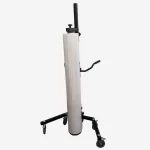What are the uses of honeycomb board
Honeycomb board, also known as honeycomb cardboard or honeycomb panel, is a lightweight and versatile material that has gained popularity in various industries. Made up of a series of hexagonal cells formed between layers of paper or cardboard, honeycomb boards offer numerous benefits and can be used in a wide range of applications. In this article, we will explore some of the common uses of honeycomb boards.
1. Packaging and shipping
One of the primary uses of honeycomb board is in packaging and shipping. Its unique structure provides excellent strength-to-weight ratio, making it an ideal choice for protecting fragile items during transportation. The honeycomb cells act as shock absorbers, absorbing impact energy and preventing damage to the packaged goods. Additionally, honeycomb board is lightweight, which helps reduce shipping costs and makes handling easier. It is commonly used in industries such as electronics, furniture, automotive, and consumer goods.
2. Furniture and interior design
Honeycombs boards are also widely used in the furniture and interior design industry. The honeycomb structure provides exceptional strength, allowing it to support heavy loads while remaining lightweight. It is commonly used as a core material in lightweight furniture, such as tables, shelves, and cabinets. Honeycomb boards can also be laminated with different decorative finishes, such as wood veneer or high-pressure laminate, to create aesthetically pleasing surfaces. Additionally, their acoustic properties make them suitable for soundproofing purposes in buildings and studios.
3. Construction and architecture
In the construction and architecture industry, honeycomb boards find applications in a variety of ways. They are commonly used as structural panels in walls, floors, and ceilings, providing strength and stability to the building. The lightweight nature of honeycomb boards also allows for easier installation and reduces the load on the foundation. Moreover, honeycomb boards are excellent thermal and sound insulators, helping to improve energy efficiency and create a quieter living or working environment.
4. Automotive industry
Honeycomb boards have found their place in the automotive industry as well. Their lightweight and high strength make them valuable materials for various components, including car doors, floor panels, and bumpers. Not only do honeycomb boards contribute to weight reduction, but they also enhance the structural integrity of the vehicles, improving safety. Additionally, their shock absorption properties help reduce vibration and noise inside the vehicle, resulting in a more comfortable driving experience.
5. Advertising and displays
Honeycomb boards are extensively used in the advertising and display industry due to their versatility and cost-effectiveness. They can be easily cut and shaped into various sizes and designs, making them suitable for creating eye-catching displays and signage. Honeycomb panels are lightweight, making transportation and installation hassle-free. They are often used for trade show booths, exhibition stands, retail store displays, and outdoor billboards. Furthermore, their recyclable nature makes them an environmentally friendly choice for temporary or short-term advertising campaigns.
In conclusion, honeycomb boards have become an essential material in many industries due to their lightweight, strength, and versatility. From packaging and shipping to furniture and interior design, construction and architecture to automotive, and advertising and displays, honeycomb boards offer numerous benefits and endless possibilities. Their unique structure and properties make them an attractive choice for businesses looking for sustainable and innovative solutions.
.webp)
